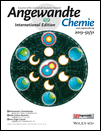Homolytic Cleavage of FeS Bonds in Rubredoxin under Mechanical Stress†
We acknowledge funding from FAPESP (projects 07/52772-6 and 12/02501-4) and a joint FAPESP-CNRS project (23277).
Graphical Abstract
Spin is the thing: Iron–sulfur proteins of the rubredoxin family only have one Fe center coordinated by four cysteine residues (see picture, Fe orange). A multiscale modeling approach is used to see if FeS bond dissociation in these iron–sulfur clusters occurs by heterolytic fission or homolytic cleavage. As Fe complexes can have near-degenerate levels with different total spin, their spin states and spin crossovers must be characterized during the reaction.





